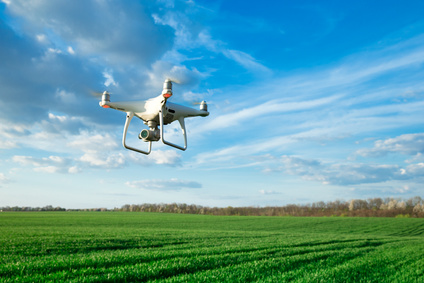Regulating the use of drones
It used to be that drones (remotely controlled unmanned flying aircrafts, often carrying cameras) were only associated with the military. Now their use is becoming increasingly widespread among both consumers and commercial organisations.
They are already being used to deliver aid packages, conduct safety inspections and monitor crops and animals, and Amazon recently made its first delivery by drone in the UK. With the seemingly endless number of uses for drones, it is no surprise a recently released PwC report highlighted that the uptake of drones could be worth up to £41.7 billion to the UK GDP alone by 2030. There has been a significant increase in the number of commercial permissions issued by the Civil Aviation Authority (CAA) in the last year. The number of active commercial licences increased from 2,500 to 3,800 in 2017, a year on year growth of 52%.
However, their increased use has also led to them making the headlines for the wrong reasons. As a result of growing concerns over the public’s safety, the Parliament has adopted the Air Navigation (Amendment) Order earlier this year to ensure safer use of drones and provide appropriate powers to enforcement bodies to properly police drone use and penalise incorrect use, including the possible use of fixed penalty notices.
UK Drone Regulations
The law is made up of a mixture of general and aviation specific law, with the Air Navigation Order 2016 being the main piece of legislation governing aircraft, including drones, in the UK. It is the CAA that helps regulate the use of drones through a dedicated drone regulation team.
Drone users must:
- always keep the drone within sight;
- keep 500 ft. away from crowds and/or built up areas, if their drone is equipped with a camera;
- stay 150 ft. away from people and buildings, if their drone is equipped with a camera;
- avoid flying over or 150 ft. near to open areas with more than 1,000 people present;
- adhere to local council’s rules about drone flights in the area.
Additional restrictions measures have been adopted by the Air Navigation (Amendment) Order 2018 which came into effect on 30 July 2018. Drones:
- must fly below an altitude of 400 ft.;
- must not fly within 1 km of any airport’s boundaries;
- pilots must be able to present their registration documents if requested to do so by the police;
- pilots will be required to take a drone safety test before they’re allowed to fly. Users who fail to register or sit the competency tests could face fines up to £1,000.
- weighing over 250g will need to be formally registered with the CAA (this requirement will be enforced from 30 November 2019);
- users will be told to use apps to plan their flights, to make sure that they are not entering unsafe or no-fly zones.
As this relatively new industry continues to grow, operators of drones, whether individual or commercial, should pay particular attention to any new policy or legislative developments.
